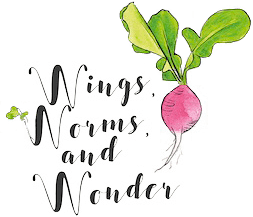Wonder Wednesday 133: Josef Albers Leaf Studies
Have You ever heard of artist Josef Albers, the Bauhaus (Germany), or the Black Mountain College (North Carolina)? Well, Albers was a groundbreaking human (as was his wife Anni) and a magnificent artist and thinker. Observation and seeing one's world were immensely important to Josef Albers.
He made it his mission to teach his students how to see, how to examine relationships between forms and colors, and how to notice what is usually passed over in the bustle of life.
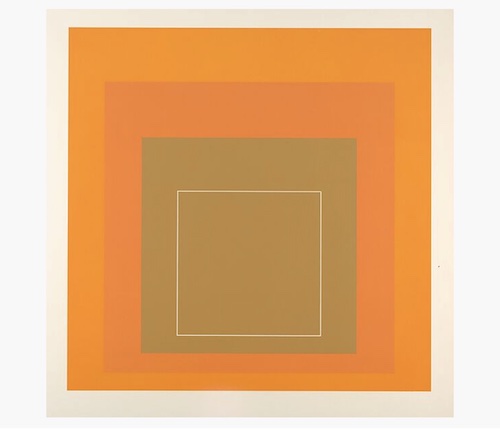
All the art images in this post are artworks by Josef Albers.
Albers was born in Bottrop, Germany, 1888. He started his career as an elementary teacher and an art teacher, in Bottrop, but on a 1 year sabbatical to study art at the Bauhaus in 1920, he decided to stay there.
He met his wife Anni, a textile artist, and quickly became inducted as a Master artist and teacher in the school.
Josef and Anni studied and taught at the Bauhaus until 1933, when the school decided to close rather than comply with the Third Reich. Anni was of Jewish descent, so the couple took up an offer to come to America later that same year.
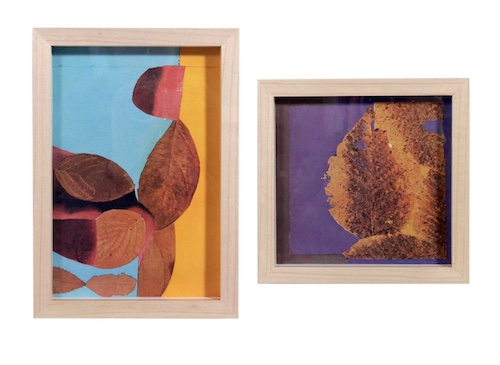
While in the Bauhaus, Albers developed his teaching philosophies of teaching the whole person and that art should be integrated into the general curriculum, as well as the principles of “practice before theory” and “learning by doing”. (Sounds quite Montessori does it not?!)
"Asked by a student upon his arrival at the College,
“What are you going to teach?”
Albers famously replied,
“To open eyes.”"
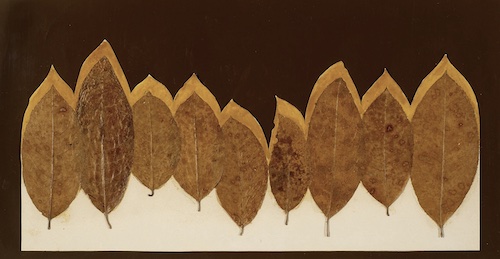
Shortly after arriving in NYC, the Albers were invited to teach at the groundbreaking (Bauhaus offspring) Black Mountain College outside of Asheville, NC. Where they taught until 1949.
It was here in the beautiful Appalachian mountains of rural North Carolina where Albers engaged in his celebrated Leaf Studies.
Albers first integrated leaves into his color courses, then they permeated all his courses.
The Black Mountain College was on a shoestring budget, so teachers and students often used and found inspiration from the natural items they found in their surroundings, like leaves.
Here we see Albers himself, holding one of his leaf studies at the Black Mountain College. Notice his lighthearted exploration of color, texture, symmetry, scale, and size.
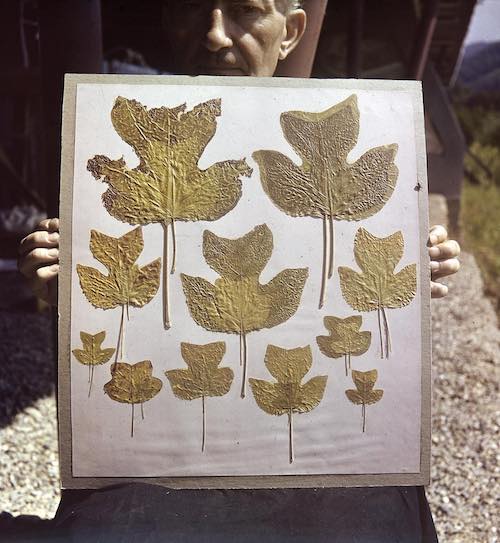
Let's take inspiration from Albers' famed Leaf Studies!
In his leaf studies, Albers' use of natural materials and paints come together as an example of his inventiveness, experimental drive toward investigations of materials, and his underlying sense of humor.
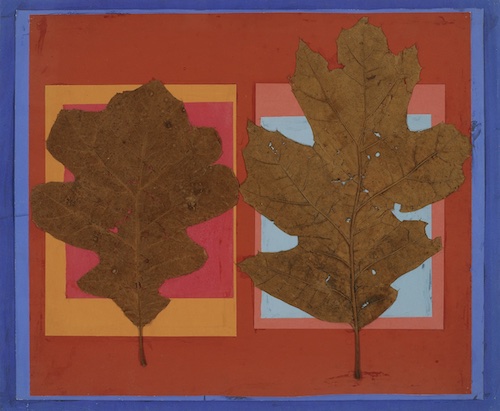
"For the artist Josef Albers, every color has the power to change every other color placed next to it.
Through his paintings, he sought to explore how colors would interact in the most active way to have an effect on the viewer."
Brenda Danilowitz, Chief Curator of the Josef and Anni Albers Foundation
This project can be easily modified in many creative ways to meet any age or ability level - which is quite fitting with Albers' focus on relationships within art and humanity.
The key to this project is process. It's all about seeing the leaves and letting whatever ideas come to you inspired by the relationships between the leaves colors, shapes, sizes, interplay with the paper and paints - whatever goes!
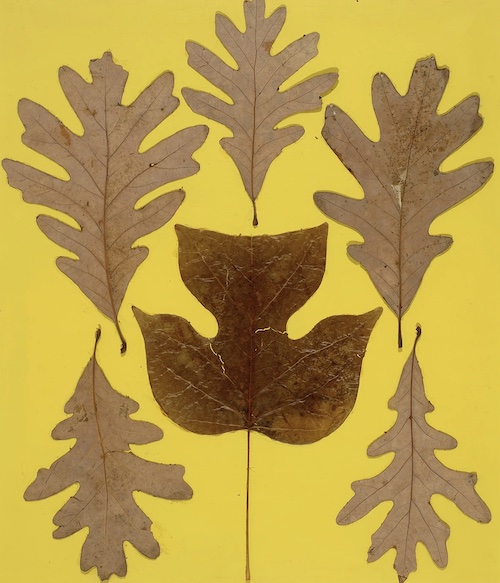
Materials:
LEAVES!
“Collected in all varieties, in all possible shades of color—in large numbers for an easy exchange between students—they are both exciting to see and most stimulating to work with in free studies.”
Josef Albers
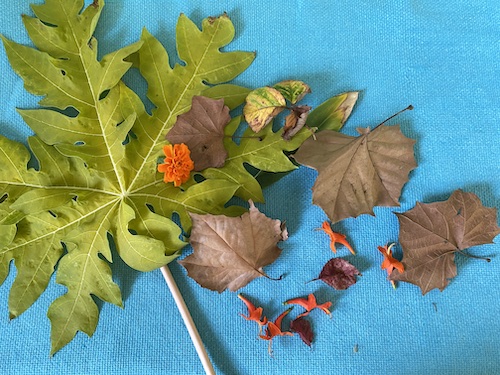
Materials Con't.
- Paper of any colors shape and size
- Glue
- Scissors
- Optional: Paints and any other nature bits and art supplies you like!
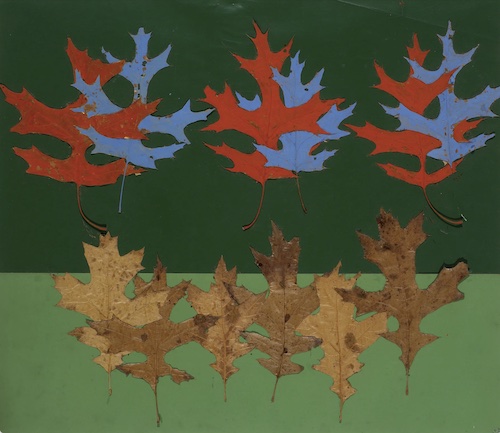
Preparation:
Take a nature walk to collect leaves. While walking, breathe deeply. Engage the senses. Listen, smell and feel your environment. (You could even do the Wings, Worms, and Wonder guided Sensory Observation.) Focus on Albers philosophy to notice the beings, items, and relationships in our world that are normally ignored or passed over.
If going for a walk is not possible, collect leaves in advance or even use salad and greens from the grocery store or garden! (spring mix salad has some nice purples in it:)
Either way, take the time to experience the leaves even if they are collected in advance. Albers had a soft spot for autumn leaves, and told his students,
"You mustn't think of the autumn as a time of sadness, when winter is coming,
because all the trees, they know winter is coming, so they get drunk! With color!
Ach, it's beautiful! So now bring in leaf studies.”
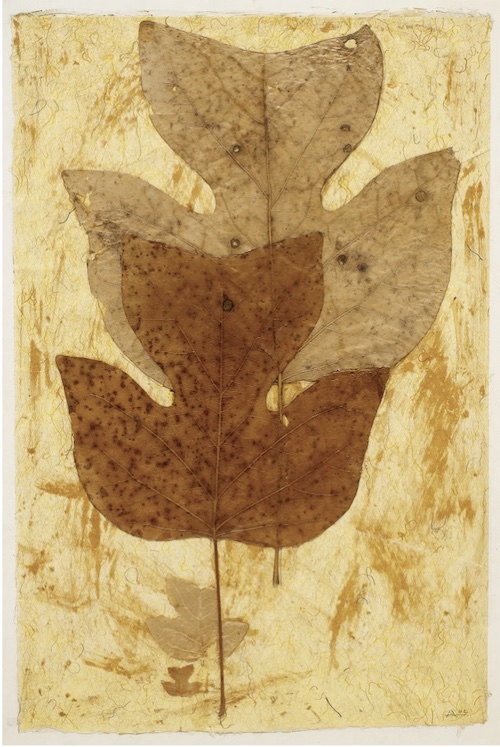
Procedure:
Explore, play, collage, paint!
Make "free studies" as Albers called them!
I'm purposefully not including any of my own explorations here so as not to plant any subconscious ideas of how this "should or shouldn't" be done.
But here are some ideas to get you started:
*Layer papers with leaves, leaves on leaves,
*Paint the leaves and papers,
*Play with popping contrasting, or muting, colors.
*What do the leaves and the colors mean to you?
*How can you convey a feeling with the color, or the scale of the composition and elements?
*Can you make them zing?
*How to leaf textures play with each other and washes of paint. How do they contrast against each other?
*Just play. Remember - Albers did start his career as an elementary teacher after all - so channel your childhood wonder!
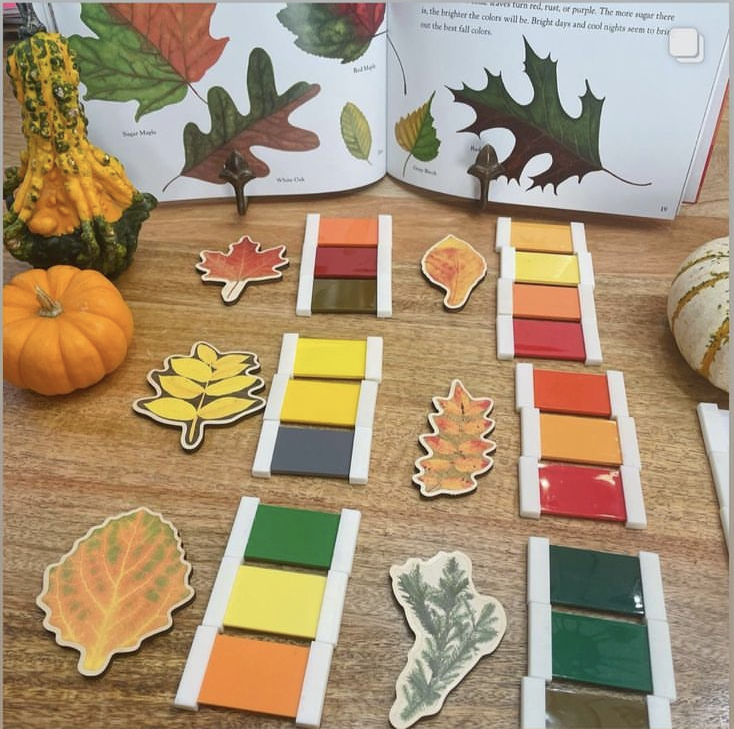
Photo Credit: The Montessori Inspired Co.
Extensions:
Do this in a temporary etherial way outdoors using sidewalk chalk and leaves. The let the leaves and rain wash the art away. This would be very "Albers," as he firmly believes that "art is an experience rather than a commodity."
Combine a lesson on Josef Albers with the Montessori Color Tiles and autumn leaves and nature! Notice, how in the photo above, the children found the color relationships in the leaves using the color tiles.
(This awesome color tile project was created by The Montessori Inspired Co. @montessoriinspiredco)
Extra ideas for various ages:
If you're doing this with children, follow their lead in open ended exploration of materials.
If you're doing this with adults, really relax into seeing, into observing, into noticing the details and relationships between the colors and forms.
These Albers inspired leaf studies should keep you and yours engaged with fall nature until the leaves have all fallen and the frost has frozen them to the soil! I really encourage you to let go with this one.
Want more leaf projects? Check out the Wonder Wednesday 74 Leafy Resist project and the Wonder Wednesday 37 Leaf Shaped Nature Journals
